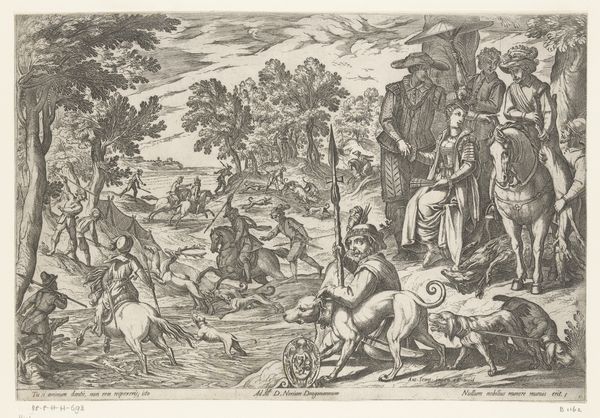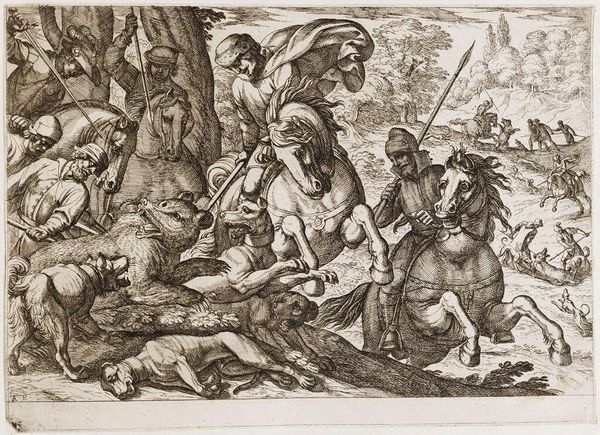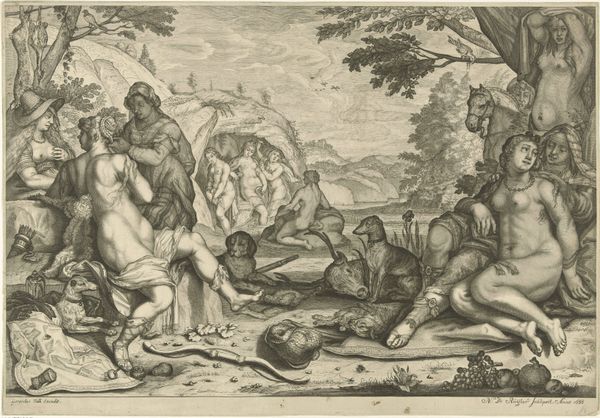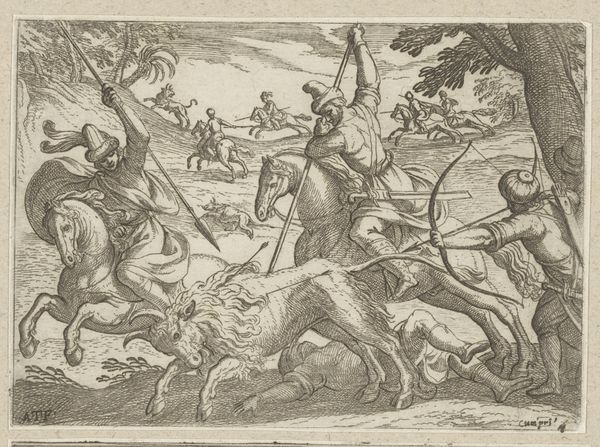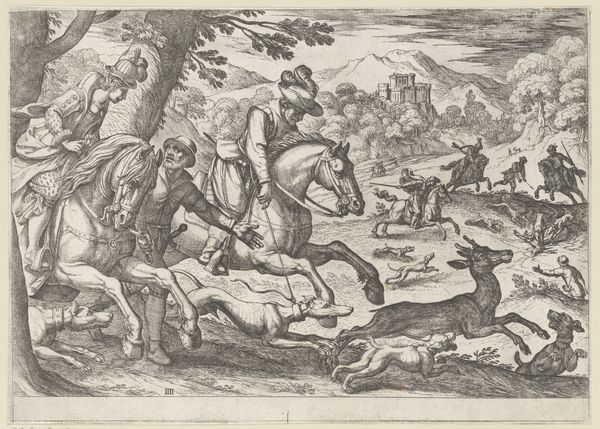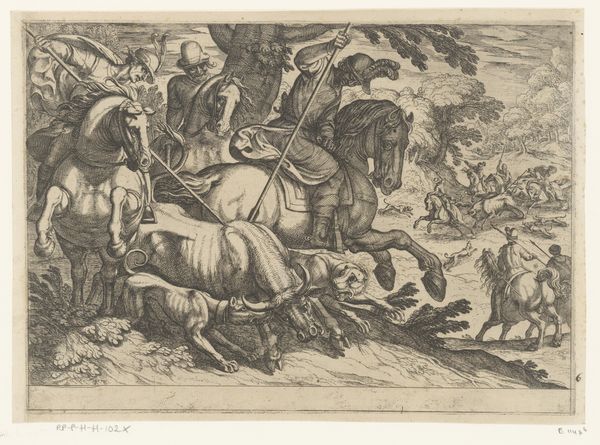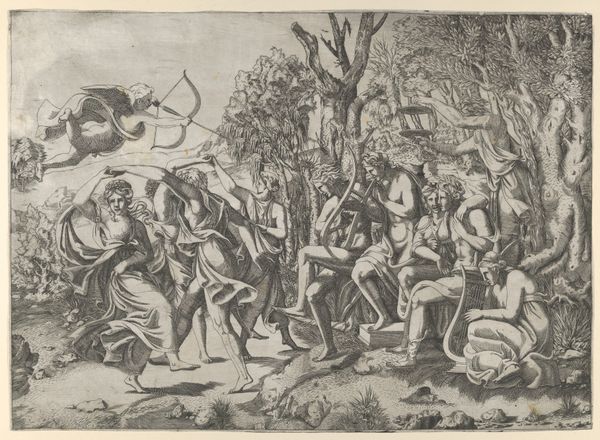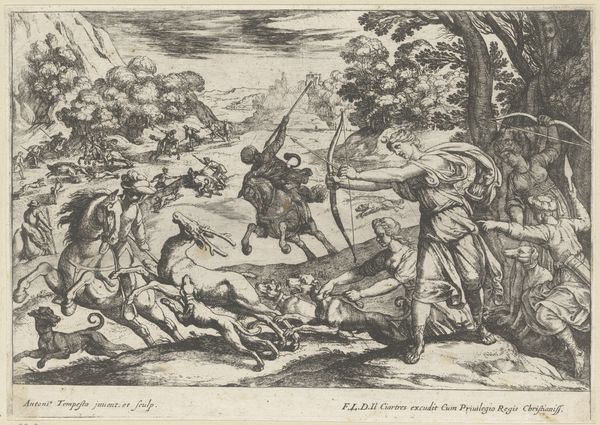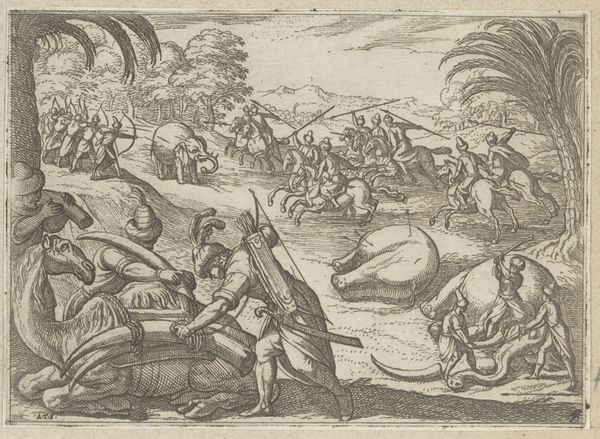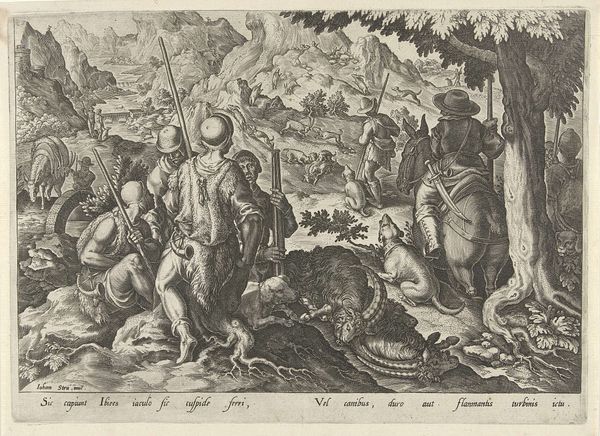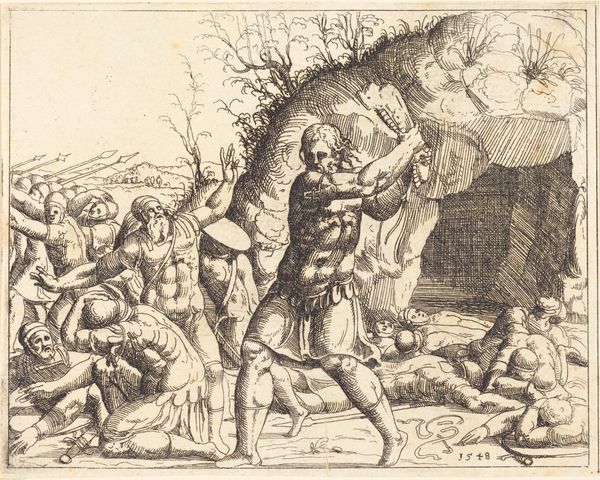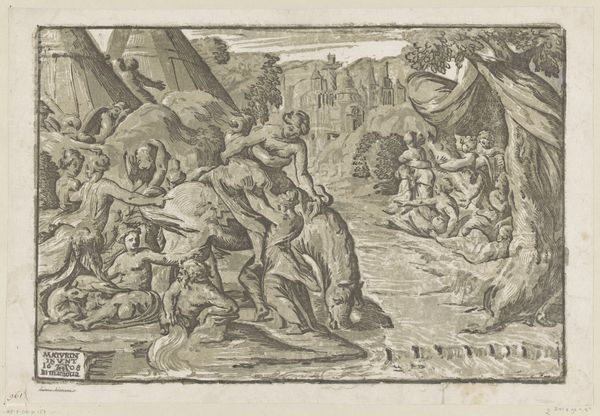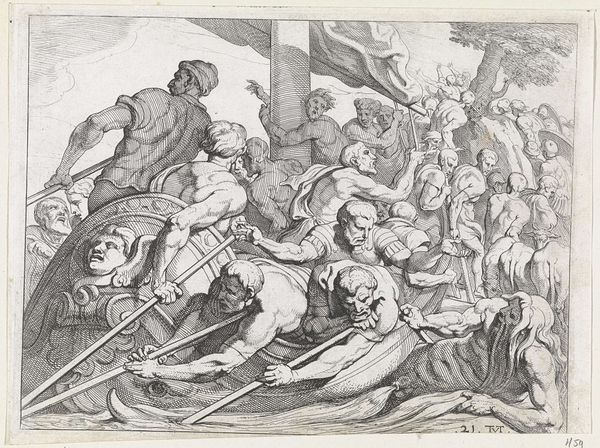
drawing, print, etching, ink, engraving
#
drawing
# print
#
etching
#
landscape
#
figuration
#
ink
#
horse
#
men
#
genre-painting
#
history-painting
#
engraving
Dimensions: Sheet: 8 1/16 × 11 1/16 in. (20.4 × 28.1 cm)
Copyright: Public Domain
Curator: What a lively scene. This is Antonio Tempesta’s "Bear Hunt, from ‘Hunting Scenes VI’," an etching dating to 1609, currently housed at The Met. What are your initial thoughts? Editor: Chaotic. Intensely chaotic, but controlled. The texture feels rich, due to the intricacy of the engraving—the medium here being of utmost importance. So much energy is channeled through these etched lines; it is really the tension, materiality and frenzy that hits you first, more than the historical implications. Curator: True. Consider how this image functions as a piece of history, though. We are looking at an idealization of the hunt, removed from its brutalities, intended for elite consumption. Notice how Tempesta positions these mounted hunters? These figures are heroic. It also gives insight into the aristocratic culture that relished hunting as a pastime. Editor: The horses too... magnificent beasts reduced to tools of human domination. Were these prints widely available? How might their consumption have impacted social attitudes towards animals? This speaks volumes about early modern environmental politics—or rather, lack thereof. The ease of reproducibility alters both viewership and the value attributed to wildlife. Curator: The accessibility would depend on one's wealth and social standing. Tempesta, although Italian, worked across Europe. His prints found their way into pattern books and inspired other artists and artisans. One can imagine this imagery influencing tapestries, even tableware. What was once exclusive becomes woven into the broader visual culture. Editor: It's fascinating to think about its dissemination and the layering of meanings—the transformation from exclusive imagery to, perhaps, decorative trope through the means of mechanical production and later consumption. How class and context mediate not only access, but also perception itself. Even the act of printing changes the artistic act, bringing in multiple artisans at once and, with them, a varied set of assumptions on this historical and somewhat fanciful portrayal of bear hunting. Curator: Indeed, it presents a somewhat romantic vision, despite its violence. It allows us to see a snapshot of social values, elite entertainment, and the distribution of images. Editor: It is quite sobering to consider that these historical moments echo in our current relationship with nature and representation today. Thank you.
Comments
No comments
Be the first to comment and join the conversation on the ultimate creative platform.
